-
Can Consumer Complaints Be Amended?


Table Of Contents
- The Nature of Consumer Complaints
- Amending Consumer Complaints: Your Rights
- Practical Considerations for Amending Consumer Complaints
- Conclusion
Consumer complaints serve as a vital mechanism for addressing grievances and seeking resolution for issues encountered in the marketplace. However, what happens if you realize you’ve omitted crucial details or wish to add new information to your complaint after it’s been filed? Can consumer complaints be amended? Let’s delve into this question to understand your rights and options.
The Nature of Consumer Complaints
Consumer complaints are formal expressions of dissatisfaction with a product or service, typically directed toward the seller, manufacturer, or service provider. These complaints can cover a broad spectrum of issues, including product defects, poor service quality, billing errors, misleading advertising, and more. Many jurisdictions have established consumer protection laws and agencies to ensure that consumers have avenues for recourse when their rights are violated or when they experience unfair treatment in the marketplace.so you can file a consumer complaint forum.
Amending Consumer Complaints: Your Rights
In most cases, consumers have the right to amend their complaints, provided certain conditions are met:
- Timeliness: It’s crucial to act promptly if you wish to amend your complaint. Many consumer protection agencies and dispute resolution mechanisms have specific deadlines or timeframes within which complaints must be filed or amended.
- Relevance: The additional information or amendments you wish to make should be directly related to the original complaint and contribute to a clearer understanding of the issues at hand. Frivolous or unrelated amendments may not be entertained.
- Procedure: Check the procedures outlined by the relevant consumer protection agency or dispute resolution mechanism regarding amending complaints. Some may require you to submit a formal request or follow specific steps to ensure that the amendments are properly documented and considered.
- Notifying the Other Party: Depending on the nature of the complaint and the stage of the dispute resolution process, you may need to notify the other party (e.g., the seller or service provider) of any amendments or additional information you wish to introduce. This allows them an opportunity to respond or address the new allegations.
Practical Considerations for Amending Consumer Complaints
When amending a consumer complaint, consider the following practical tips to ensure effectiveness and efficiency:
- Document Changes: Clearly document the amendments or additional information you wish to introduce, including dates, details, and any supporting evidence or documentation.
- Communicate Clearly: If required to notify the other party of amendments, ensure that your communication is clear, courteous, and concise. Clearly state the reasons for the amendments and any impact they may have on the resolution process.
- Follow Up: After submitting amendments, follow up with the relevant authorities or parties involved to ensure that your changes have been duly noted and integrated into the complaint resolution process.
- Seek Assistance if Necessary: If you encounter any challenges or uncertainties regarding the process of amending your complaint, don’t hesitate to seek assistance from consumer advocacy organizations, legal aid services, or relevant government agencies.
Conclusion
Consumer complaints can typically be amended under certain conditions, including timeliness, relevance, and adherence to procedural requirements. By understanding your rights and following established procedures, you can effectively update your complaint to reflect new information or address any omissions. Amending consumer complaints ensures that you maintain an accurate record of your grievances and maximizes your chances of achieving a satisfactory resolution to your concerns.
Posted by Simran
-
Is an affidavit a legal document?
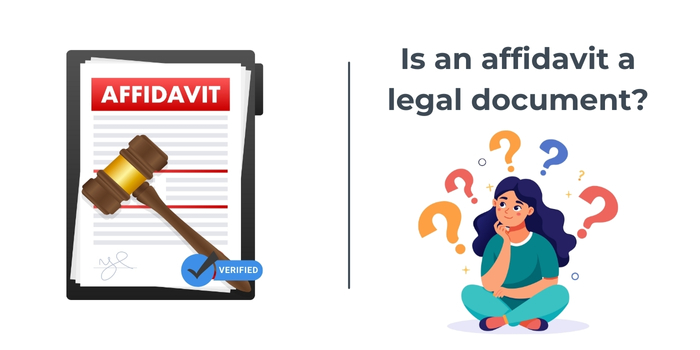

Table Of Content
- What is an Affidavit?
- Legal Requirements for an Affidavit
- Is an Affidavit a Legal Document?
- Importance of Notarizing an Affidavit
- Conclusion: The Power of Affidavits in Legal Proceedings
In legal matters, clarity and authenticity are paramount. One often hears the term “affidavit” thrown around, but what exactly is it, and is it a legally binding document? Let’s delve into the intricacies of affidavits to demystify their legality and significance.
What is an Affidavit?
An affidavit is a written statement of facts, voluntarily made by an individual under oath or affirmation, typically administered by a notary public or other authorized official. Affidavits serve as evidence in legal proceedings and are considered legally binding documents.
Legal Requirements for an Affidavit
To be considered valid, an affidavit must meet certain legal requirements. These include:
- The affiant (the person making the affidavit) must swear or affirm that the statements contained in the affidavit are true and accurate to the best of their knowledge.
- The affidavit must be signed by the affiant in the presence of a notary public or other authorized official.
- The affiant’s signature must be witnessed and notarized.
Uses of Affidavits
Affidavits serve various purposes in legal matters, including:
- Providing evidence in court proceedings.
- Verifying the authenticity of documents.
- Confirming identity or residency.
- Supporting or opposing motions or petitions.
How to Create an Affidavit
Writing an affidavit involves several steps:
- Identify the facts you wish to attest to in the affidavit.
- Draft a statement that accurately describes the facts in a clear and concise manner.
- Include your personal information, such as your name, address, and contact details.
- Sign the affidavit in the presence of a notary public or other authorized official.
- Have the affidavit notarized to authenticate it.
Is an Affidavit a Legal Document?
Yes, an affidavit is a legal document that is admissible as evidence in court proceedings. It is considered a sworn statement made under oath or affirmation, and the affiant can be held accountable for any false statements or misrepresentations contained in the affidavit.
Importance of Notarizing an Affidavit
Notarizing an affidavit adds an extra layer of authenticity and credibility to the document. A notary public verifies the identity of the affiant and ensures that the affidavit is signed voluntarily and without coercion. Notarization also serves to deter fraud and unauthorized alterations to the document.
Validity and Admissibility of Affidavits in Court
Affidavits are generally admissible as evidence in court proceedings, provided they meet the legal requirements for validity. However, the admissibility of an affidavit may be subject to certain rules of evidence and procedural requirements. It is important to consult with a legal professional to ensure that your affidavit will be accepted by the court.
Common Mistakes to Avoid in Affidavits
When creating an affidavit, it is important to avoid the following common mistakes:
- Providing false or misleading information.
- Failing to include all relevant facts.
- Using ambiguous or unclear language.
- Failing to sign the affidavit in the presence of a notary public or other authorized official.
- Failing to have the affidavit notarized.
Conclusion: The Power of Affidavits in Legal Proceedings
Affidavits play a crucial role in legal proceedings by providing sworn statements of fact that can be used as evidence in court. By understanding the legal requirements for creating an affidavit and ensuring its notarization, individuals can effectively utilize affidavits to support their legal claims or defenses.
-
Legal Notice For Recovery Of Money
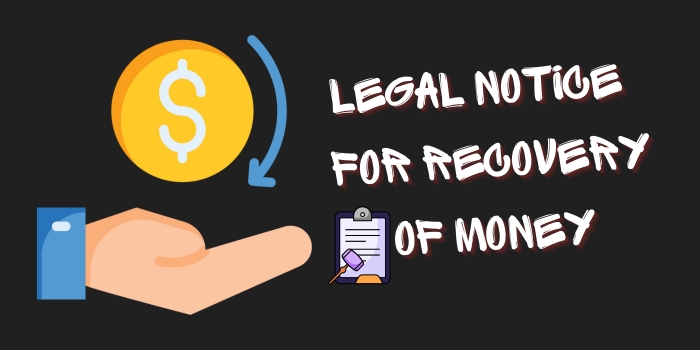

Table Of Contents
- Introduction to Legal Notices for Debt Recovery
- Understanding the Purpose and Importance
- Key Components of a Legal Notice
- Steps to Drafting an Effective Legal Notice
- Sending the Legal Notice: What to Expect
- Conclusion:
In the realm of financial transactions, disputes over unpaid debts can often arise, leading individuals and businesses to seek recourse through legal channels. One of the initial steps in this process is the issuance of a legal notice for the recovery of money. Let’s delve into this essential aspect of debt recovery and understand its intricacies.
Introduction to Legal Notices for Debt Recovery
A legal notice is a formal communication sent by one party to another to convey a legal intention or demand. In the context of debt recovery, a legal notice serves as a warning to the debtor, informing them of the creditor’s intent to pursue legal action if the debt is not repaid within a specified timeframe.
Understanding the Purpose and Importance
The primary purpose of a legal notice for debt recovery is to provide the debtor with a final opportunity to settle the outstanding debt amicably before resorting to litigation. It serves as a legal document that establishes the creditor’s claim and outlines the consequences of non-compliance. Furthermore, issuing a legal notice demonstrates the creditor’s seriousness about pursuing the debt and can act as evidence in court proceedings.
Key Components of a Legal Notice
A well-crafted legal notice for debt recovery typically includes the following components:
- Details of the Parties: Clearly identify the creditor and debtor, including their names, addresses, and contact information.
- Statement of Claim: Specify the amount owed, including any interest or penalties accrued, along with the date by which payment is expected.
- Demand for Payment: Clearly state the creditor’s demand for the repayment of the debt within a reasonable timeframe.
- Consequences of Non-compliance: Warn the debtor of the legal consequences of failing to comply with the demand, such as initiating legal proceedings or pursuing other remedies available under the law.
- Acknowledgment of Receipt: Request confirmation of receipt of the legal notice to ensure that the debtor cannot claim ignorance of its contents.
Steps to Drafting an Effective Legal Notice
When drafting a legal notice for debt recovery, it’s essential to follow these steps to ensure its effectiveness:
- Gather Documentation: Compile all relevant documents, including contracts, invoices, and correspondence related to the debt.
- Consult Legal Counsel: Seek guidance from a legal professional to ensure compliance with applicable laws and regulations.
- Draft the Notice: Clearly articulate the creditor’s claim, demand for payment, and consequences of non-compliance in a formal and concise manner.
- Review and Revise: Carefully review the draft notice for accuracy, clarity, and completeness, making any necessary revisions.
- Finalize and Send: Once satisfied with the notice, finalize it and send it to the debtor via registered mail or courier service to ensure proof of delivery.
Sending the Legal Notice: What to Expect
Upon receiving the legal notice, the debtor has a specified period, typically 15 to 30 days, to respond and either settle the debt or contest the claim. In the event of non-compliance or refusal to acknowledge the debt, the creditor may proceed with legal action, such as filing a lawsuit in civil court to recover the money owed.
Conclusion:
Issuing a legal notice for the recovery of money is a critical step in the debt recovery process, providing creditors with a formal means to assert their rights and demand repayment from debtors. By understanding the purpose, key components, and steps involved in drafting and sending a legal notice, creditors can empower themselves to pursue debt recovery effectively and assertively within the bounds of the law.
-
Name Change For My Child
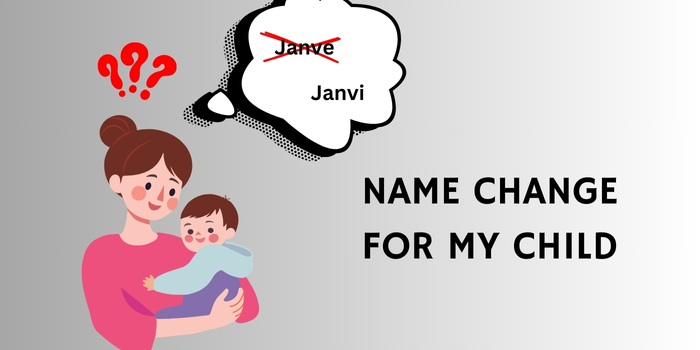

Table Of Content
Choosing a name for your child is a significant milestone, but sometimes circumstances arise that prompt a reconsideration. Whether it’s a change in family dynamics, cultural reasons, or a desire to provide your child with a name that better reflects their identity, the process of changing your child’s name requires careful consideration and adherence to legal procedures. In this blog, we will explore the various aspects of changing a child’s name, including the reasons behind such decisions, the legal process involved, and important considerations for parents.
Reasons for Name Change:
- Family Dynamics:
Family structures can evolve over time, and a name change might be sought due to remarriage, adoption, or other changes in family composition. - Cultural Considerations:
Sometimes, parents may opt for a name change to better align with their cultural or religious beliefs, ensuring that their child’s name reflects their heritage. - Identity Affirmation:
As children grow, they may develop a stronger sense of identity. A name change can be a way to affirm and celebrate their identity, especially in cases of gender identity exploration.
Legal Process:
- Research Local Laws:
Begin by researching the laws regarding name changes for minors in your jurisdiction. Requirements can vary, so it’s crucial to understand the specific procedures and documentation needed. - Consent of Both Parents:
In many cases, the consent of both parents is required for a name change. This ensures that both legal guardians are in agreement and aware of the decision. - Petition for Name Change:
The next step typically involves filing a petition for the name change with the appropriate court. This may require providing reasons for the change and presenting supporting documentation. - Court Hearing:
Some jurisdictions mandate a court hearing to review the request. During the hearing, parents may need to explain the reasons behind the name change and assure the court that it is in the best interest of the child.
Considerations for Parents:
- Child’s Involvement:
Depending on the child’s age, involving them in the decision-making process can be beneficial. Discuss the reasons behind the name change and ensure they feel included and supported. - Notification to Others:
Inform schools, healthcare providers, and other relevant institutions about the name change to ensure a smooth transition in official records. - Emotional Support:
Recognize that a name change can have emotional implications for your child. Provide emotional support and open communication to address any questions or concerns they may have. - Celebrate the Change:
Consider celebrating the name change as a positive and transformative moment in your child’s life. This can help reinforce the idea that the decision is one of empowerment and self-discovery.
Conclusion:
Changing your child’s name is a personal decision that requires careful consideration of legal processes and emotional well-being. By understanding the reasons behind the change, navigating the legal procedures diligently, and providing emotional support throughout the process, parents can ensure a smooth transition and empower their child to embrace their evolving identity. Remember, each family’s journey is unique, and the decision to change a child’s name is a personal one that should be approached with sensitivity and respect for the child’s well-being.
- Family Dynamics:
-
What Are The Types Of Legal Notice?
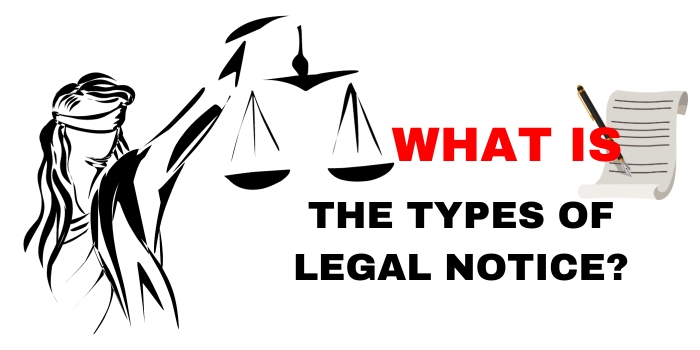

Table Of Contents
- Cease and Desist Notices
- Notice of Default
- Eviction Notices
- Demand Letters
- Breach of Contract Notices
- Notice of Intent to Sue
- Notice of Hearing
- Conclusion
In the realm of law, communication is paramount, and legal notices serve as crucial tools for conveying important information. From contractual obligations to property disputes, various situations necessitate the issuance of legal notices. In this comprehensive guide, we will explore the different types of legal notices, shedding light on their significance and the specific scenarios in which they are employed.
Cease and Desist Notices
Cease and desist notices are powerful tools used to demand the immediate cessation of a particular action. Whether it’s to halt copyright infringement, defamation, or harassment, this type of legal notice communicates a firm stance and the intention to pursue legal action if the recipient fails to comply.
Notice of Default
In financial transactions, such as loans or contracts, a notice of default is issued when one party fails to meet their obligations. This notice outlines the specific defaults, provides a grace period for remediation, and serves as a precursor to legal action if the defaults persist.
Eviction Notices
In the realm of property law, eviction notices are utilized to inform tenants of the termination of their lease agreement. These notices must adhere to specific legal procedures, ensuring both the landlord’s rights and the tenant’s entitlements are respected.
Demand Letters
Demand letters are formal notices sent before initiating legal proceedings. They articulate grievances, demand specific actions or remedies, and often provide an opportunity for negotiation or settlement outside of court. These letters demonstrate a commitment to resolving disputes amicably.
Breach of Contract Notices
When one party fails to fulfill their contractual obligations, a breach of contract notice is issued. This notice outlines the breach, demands remedy or compensation, and establishes a timeframe for compliance. It is a precursor to legal action if the breach is not rectified within the stipulated period.
Notice of Intent to Sue
A notice of intent to sue is a formal communication that alerts the opposing party of the intention to file a lawsuit. This notice typically includes a summary of the legal claims, the basis for the intended lawsuit, and a demand for resolution before formal legal proceedings commence.
Notice of Hearing
In legal proceedings, a notice of hearing is issued to inform involved parties of the date, time, and location of a scheduled hearing or court appearance. This ensures that all relevant parties have adequate time to prepare and attend the proceedings.
Conclusion
Legal notices are indispensable instruments in the legal landscape, serving as precursors to formal legal actions or tools for dispute resolution. Understanding the nuances of different types of legal notices is crucial for both legal professionals and individuals navigating various legal scenarios. Whether it’s protecting intellectual property, resolving contractual disputes, or addressing landlord-tenant matters, the appropriate use of legal notices can significantly impact the outcome of legal proceedings and foster fair and just resolutions.
-
What Is The Meaning Of Registered Rent Agreement?


Table Of Contents
- Unveiling the Essence of a Registered Rent Agreement
- The Legal Foundation: What Constitutes a Registered Rent Agreement?
- The Registration Process: Why is it Essential?
- Tenant Protection: The Advantages of Registration
- Landlord Assurance: Securing Property Interests
- Legal Validity: Understanding the Implications
- The Registration Process Demystified
- Key Components of a Registered Rent Agreement
- Common Misconceptions Dispelled
- Conclusion
Entering into a rental agreement is a common practice in the realm of real estate transactions, and it often involves a crucial legal step: the registration of the rent agreement. In this blog post, we will delve into the meaning and importance of a registered rent agreement, shedding light on why this legal process is essential for both landlords and tenants.
Unveiling the Essence of a Registered Rent Agreement
In the realm of real estate transactions, a registered rent agreement stands as a pivotal document, establishing a legal framework between owner and tenants. This legally binding contract plays a crucial role in safeguarding the interests of both parties, providing clarity and structure to the tenancy arrangement.
The Legal Foundation: What Constitutes a Registered Rent Agreement?
A registered rent agreement is a formal contract outlining the terms and conditions governing the rental arrangement between a landlord and a tenant. The agreement typically includes essential details such as the duration of the lease, rental amount, security deposit, and any specific clauses agreed upon by both parties.
The Registration Process: Why is it Essential?
One of the key aspects that distinguish a registered rent agreement from an unregistered one is the formal registration process with the local government authorities. This process involves the submission of the agreement to the concerned authority for official recording. The registration not only lends authenticity to the document but also offers legal standing in case of disputes.
Tenant Protection: The Advantages of Registration
For tenants, a registered rent agreement acts as a shield, providing a sense of security and legal recourse. In the event of a dispute, having a registered agreement ensures that the tenant’s rights are recognized and protected. Additionally, registration facilitates the enforcement of terms and conditions agreed upon in the document.
Landlord Assurance: Securing Property Interests
Landlords also benefit significantly from a registered rent agreement. It serves as a comprehensive record of the agreed-upon terms, including the rental amount, duration of the lease, and any special conditions. In case of non-compliance by the tenant, the registered agreement provides a legal basis for the landlord to take necessary actions, such as eviction or legal proceedings.
Legal Validity: Understanding the Implications
A registered rent agreement holds more weight in legal proceedings compared to an unregistered one. It serves as concrete evidence of the terms and conditions accepted by both parties, reducing ambiguity and streamlining dispute resolution processes. Courts and legal authorities often prioritize registered agreements, offering a more straightforward resolution path.
The Registration Process Demystified
To register a rent agreement, both parties – the landlord and the tenant – need to visit the local sub-registrar office. The agreement, along with necessary supporting documents, is submitted for verification and recording. The process involves payment of a nominal fee, and upon completion, the parties receive a stamped and registered copy of the agreement.
Key Components of a Registered Rent Agreement
A registered rent agreement typically includes crucial information such as:
1. Names and addresses of the landlord and tenant.
2. Details of the rented property, including its address and description.
3. Duration of the lease, specifying the start and end dates.
4. Rental amount, payment frequency, and mode of payment.
5. Security deposit details.
6. Maintenance responsibilities.
7. Any specific terms or conditions agreed upon by both parties.
Common Misconceptions Dispelled
There are often misconceptions surrounding the need for a registered rent agreement. Some may view it as an unnecessary formality, while others may consider it a time-consuming process. However, the advantages of a registered agreement far outweigh any perceived drawbacks, offering legal protection and clarity to both landlords and tenants.
Conclusion
A registered rent agreement is not just a piece of paper; it is a legal instrument that solidifies the foundation of a tenancy arrangement. By opting for registration, both landlords and tenants contribute to a transparent and secure rental ecosystem, minimizing the risk of disputes and ensuring a smooth and lawful coexistence.
-
Can We Write With Pen On Stamp Paper?


Table Of Contents
Stamp paper, a legal document staple, is often associated with official agreements, contracts, and affidavits. However, a common query that arises is whether one can use a pen to write on stamp paper. In this blog, we delve into the intricacies of this practice, exploring the legal implications and considerations associated with using a pen on stamp paper.
Understanding Stamp Paper:
Stamp paper serves as tangible evidence of a financial transaction or a legally binding agreement. Its validity is often linked to the payment of a prescribed stamp duty, which varies based on the nature and value of the transaction. It is crucial to recognize that stamp paper itself doesn’t confer legality; rather, it acts as a form of authentication for the content it carries.
Accepted Practices:
Traditionally, writing on stamp paper has been done with ink, typically in the form of a pen with black or blue ink. The emphasis lies not on the tool used but on the clarity and permanence of the writing. The goal is to create a document that is easily readable, unambiguous, and capable of withstanding the test of time.
The Legal Aspect:
The legal validity of stamp paper is not contingent on the writing instrument but on the compliance with relevant legal formalities. As long as the prescribed stamp duty is paid, and the content is clear, concise, and aligns with legal requirements, the use of a pen is generally acceptable. However, it is essential to adhere to specific guidelines to avoid potential issues.
Considerations for Writing on Stamp Paper with a Pen:
- Legibility
The foremost consideration is legibility. Whatever writing instrument is used, the content on the stamp paper must be clear, readable, and free from any ambiguity.
- Stamp Duty Payment
Ensure that the appropriate stamp duty is paid in accordance with the transaction or agreement being documented. Failure to pay the correct stamp duty can lead to legal repercussions.
- Permanent Ink
If opting for a pen, it’s advisable to use permanent ink to prevent smudging or fading over time. This helps maintain the integrity of the document.
Alternative Practices:
While pens are commonly used, it’s worth noting that some legal professionals prefer using typewriters or printing on stamp paper. These methods may enhance the document’s professional appearance and eliminate concerns related to handwriting legibility.
Conclusion:
In the realm of legal documentation, the choice of writing instrument, including the use of a pen on stamp paper, is largely a matter of practicality and adherence to legal norms. As long as the content is clear, the stamp duty is duly paid, and the document is executed following legal guidelines, the use of a pen should not pose a significant issue. It’s crucial, however, to remain aware of any specific regulations or preferences in your jurisdiction and to seek professional advice when in doubt. Ultimately, the focus should be on creating a document that stands up to legal scrutiny and serves its intended purpose effectively.
- Legibility
-
Who Carrie Rent Agreement Owner Or Tenant?
Renting a property is a significant milestone for both landlords and tenants, marked by the creation of a rental agreement. This agreement outlines the terms, conditions, and responsibilities of both parties, ensuring a smooth and lawful tenancy. One common question that arises during this process is, “Who should carry the responsibility of preparing and safeguarding the rent agreement – the owner or the tenant?” In this blog, we will explore the roles and responsibilities of both parties in the creation and management of a rent agreement.
Responsibilities of the Owner
- Drafting the Agreement: Typically, the landlord or property owner is responsible for drafting the rent agreement. This document outlines the terms and conditions of the tenancy, such as the rent amount, duration of the lease, security deposit, maintenance responsibilities, and any specific rules or regulations. It should comply with local laws and regulations.
- Including Legal Clauses: The owner should ensure that the rent agreement includes all legally required clauses. These may include clauses related to rent escalation, maintenance, property inspections, and dispute resolution. Additionally, the owner should adhere to any local or state laws governing rental agreements.
- Providing a Copy: Once the rent agreement is drafted, the owner should provide a copy to the tenant for review before the tenant moves in. It’s essential to give the tenant sufficient time to read and understand the terms and conditions.
- Signing the Agreement: After both parties have reviewed the agreement and agreed to the terms, the owner and the tenant should sign it. This signifies their mutual acceptance of the conditions and officially commences the tenancy.
Responsibilities of the Tenant
- Reviewing the Agreement: Tenants should carefully review the rent agreement provided by the landlord. It is essential to understand the terms and conditions to avoid any surprises or disputes later on.
- Seeking Clarification: If the tenant has questions or concerns about any clauses in the agreement, it is their responsibility to seek clarification from the landlord. Open communication is key to a harmonious tenancy.
- Compliance: Tenants should comply with the terms and conditions outlined in the agreement. This includes paying rent on time, adhering to property rules, and maintaining the premises as specified in the agreement.
- Safekeeping the Agreement: Once signed, tenants should keep a copy of the rent agreement in a safe place. It is a legally binding document that may be needed for reference or legal purposes during the tenancy.
- Renewal and Termination: Tenants should be aware of the agreement’s renewal and termination clauses. If they wish to continue the tenancy or terminate it, they should communicate their intentions to the landlord as specified in the agreement.
Conclusion
In the world of renting properties, the responsibility for preparing and safeguarding the rent agreement is shared between the landlord and the tenant. The owner is typically responsible for drafting the agreement and ensuring its compliance with local laws. On the other hand, tenants should thoroughly review the agreement, seek clarification when needed, and comply with its terms.
Both parties play essential roles in maintaining a successful landlord-tenant relationship. Open communication and a clear understanding of the rent agreement are vital to ensuring a trouble-free tenancy. By understanding their respective responsibilities and fulfilling them conscientiously, both owners and tenants can enjoy a secure and harmonious rental experience.
-
Can I Change My Name Without Documents?
Table Of Contents
- Understanding the Reasons for Name Change
- Informal Name Change
- Legal Name Change
- Challenges and Considerations
- Conclusion
Your name is an integral part of your identity, and there might come a time when you wish to change it. This desire could be driven by personal, cultural, or even legal reasons. However, changing your name without documents can be a complex process, and it’s essential to understand the options, requirements, and potential challenges involved. In this blog, we will explore the possibility of changing your name without official documents.
Understanding the Reasons for Name Change
Before delving into the process of changing your name without documents, it’s crucial to comprehend the reasons behind your decision. Common motivations for a name change include:
- Personal Preference: If you simply prefer a different name, there may be avenues to adopt it informally.
- Cultural or Religious Reasons: Some individuals seek to change their names for cultural or religious purposes, and this may be possible within specific communities.
- Gender Transition: For transgender individuals, a name change often accompanies a gender transition.
Informal Name Change
In many cases, you can change your name informally without legal documents. This informal change involves adopting a new name and using it consistently in your daily life. However, there are some considerations to keep in mind:
- Consistency: The key to an informal name change is consistency. You should consistently use your new name in all aspects of your life, including work, personal relationships, and official interactions.
- Practical Limitations: While you can informally change your name, there may be practical limitations in some situations. Official documents, such as driver’s licenses and passports, will still reflect your old name.
- **Recognition: The recognition of your new name by institutions and individuals may vary. Some may readily accept your informal name change, while others may require legal documents.
Legal Name Change
To have your new name officially recognized on legal documents, you generally need to go through a legal name change procedure. This typically involves the following steps:
- Petition the Court: You file a petition in the appropriate court, explaining your reasons for the name change.
- Publication: In some jurisdictions, you may be required to publish notice of your name change in a local newspaper.
- Court Hearing: The court may hold a hearing to review your request and ensure there are no fraudulent intentions.
- Court Order: If the court approves your request, you will receive a court order approving your name change.
- Update Documents: With the court order, you can then update your identification documents, such as your driver’s license, passport, and social security card.
Challenges and Considerations
Changing your name without documents can pose challenges. Some of these challenges include:
- Inconsistent Records: Your official documents may not match your preferred name, which can lead to confusion or difficulties in certain situations.
- Selective Recognition: Institutions and individuals may choose whether to recognize your new name, which can create inconsistencies in your interactions.
- Limited Legal Protection: Without legal documentation, you may have limited legal protection for your new name.
Conclusion
While it is possible to change your name without documents through informal means, the extent to which your new name is recognized and accepted can vary. For a legally recognized name change, a formal legal process is typically necessary. If you are considering a name change, it is advisable to consult with an attorney or research the specific requirements in your jurisdiction to ensure a smooth and legally compliant process. Your name is an essential part of your identity, and any changes should be made with careful consideration and awareness of the legal and practical implications.
Written by Learn finance and legal
-
A Step-by-Step Guide: How Can I Apply for a Digital Signature Certificate
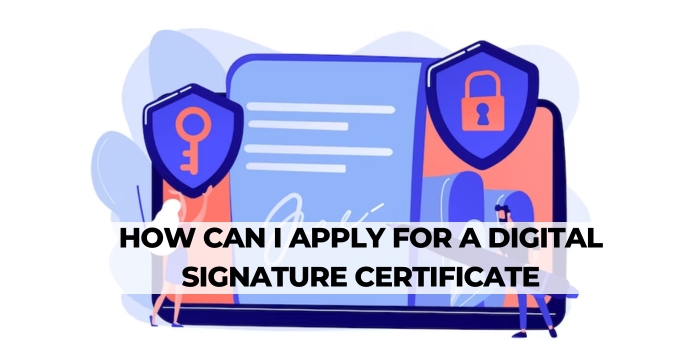

Table Of Contents
- Step 1: Choose the Type of DSC
- Step 2: Select a Certifying Authority (CA)
- Step 3: Gather Required Documents
- Step 4: Fill Out the Application Form
- Step 5: Payment
- Step 6: Verification
- Step 7: DSC Generation
- Step 8: Installation
- Step 9: Test Your DSC
- Step 10: Renewal and Maintenance
- Conclusion
In today’s digital age, where online transactions and documentation have become the norm, ensuring the security and authenticity of electronic documents is paramount. This is where Digital Signature Certificates (DSCs) come into play. DSCs serve as electronic counterparts to physical signatures and are used to verify the identity of individuals or entities involved in digital transactions. If you’re looking to apply for a DSC, this step-by-step guide will walk you through the process.
Step 1: Choose the Type of DSC
Before you apply for a DSC, determine the type that suits your needs. In India, there are three classes of DSCs:
- Class 1: Used for basic purposes like email communication and validation. It verifies the user’s name and email address.
- Class 2: Suitable for business transactions and tax filings. It requires more rigorous identity verification and is commonly used for income tax returns and company filings.
- Class 3: Provides the highest level of security and is used for e-commerce, e-tendering, and other high-value transactions. It involves a stringent verification process and is recommended for sensitive transactions.
Choose the class that aligns with your intended use.
Step 2: Select a Certifying Authority (CA)
Certifying Authorities are authorized organizations that issue DSCs. It’s crucial to choose a reputable CA recognized by your country’s government. In India, some well-known CAs include eMudhra, Sify, Capricorn, and more. Visit their official websites to initiate the application process.
Step 3: Gather Required Documents
Different CAs may have specific document requirements for digital signature, but generally, you’ll need the following:
- Proof of Identity: Documents such as Aadhaar card, passport, driver’s license, or voter ID card.
- Proof of Address: Utility bills, bank statements, or rental agreements can serve as address proof.
- Passport-size Photographs: Prepare a few passport-sized photos as you’ll need them for your application.
- PAN Card: This is mandatory for individuals and businesses applying for DSCs in India.
Ensure you have clear, legible copies of these documents in the required formats.
Step 4: Fill Out the Application Form
Visit the website of your chosen CA and find the DSC application form. Fill it out accurately, providing all the required information. Be meticulous in ensuring that your personal details match the documents you’re submitting.
Step 5: Payment
The application for a DSC usually comes with a fee, which varies depending on the CA and the type of DSC you’re applying for. Make the necessary payment online through the CA’s designated payment gateway.
Step 6: Verification
CA verification is a critical step to ensure the authenticity of the applicant. Depending on the CA’s policies, this could involve a physical visit to their office or an online verification process. Follow the CA’s instructions carefully for a smooth verification process.
Step 7: DSC Generation
After successful verification, the CA will generate a key pair for your DSC – a public key (to verify your signature) and a private key (to create your signature). The private key is stored securely on a hardware device, typically a USB token, to prevent unauthorized access.
Step 8: Installation
The CA will provide you with detailed instructions on how to install and use your DSC. Follow these instructions carefully to ensure you can use your DSC effectively for digital transactions and document signing.
Step 9: Test Your DSC
Before using your DSC for critical transactions, it’s a good practice to test it with non-sensitive documents or transactions to familiarize yourself with the process and ensure everything is functioning correctly.
Step 10: Renewal and Maintenance
DSCs have an expiration date, usually one or two years from the date of issue. Keep track of the expiration date and renew your DSC well in advance to avoid disruptions in your digital transactions.
Conclusion
Obtaining a Digital Signature Certificate is a prudent step in today’s digital landscape to ensure the security and authenticity of your electronic documents and transactions. By following these steps and choosing a reputable Certifying Authority, you can navigate the application process with ease and harness the power of DSCs for secure online interactions.
Posted by Ajay
-
Subscribe
Subscribed
Already have a WordPress.com account? Log in now.